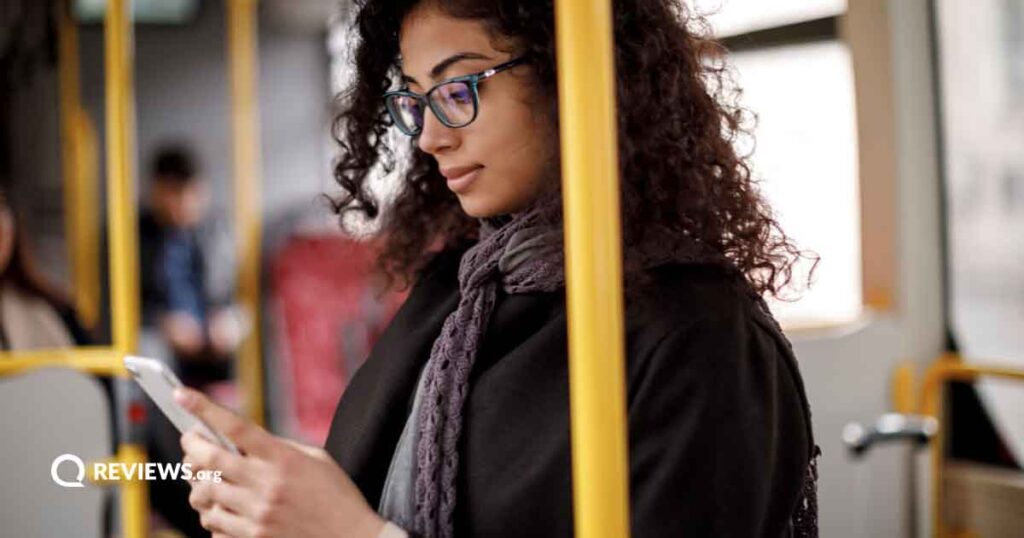States with more rural areas—Alaska, West Virginia, and Wyoming—are getting the most funding per resident.
$42B in Broadband Funding: See Where That Money Is Going in Each State
Access to reliable and affordable high-speed internet remains a pressing need across the U.S., especially in states with higher rural populations. The Broadband Equity, Access, and Deployment (BEAD) program aims to address the connectivity gap between those who have access and those who don’t.
The program—passed as part of the November 2021 bipartisan Infrastructure Investment and Jobs Act, signed into effect by the Biden-Harris Administration—sets aside $42.5 billion in federal funds for expanding broadband infrastructure. The funds will be parceled out to all 50 U.S. states, plus Washington D.C., Puerto Rico, the U.S. Virgin Islands, Guam, American Samoa, and the Commonwealth of the Northern Mariana Islands.
In June 2023, the National Telecommunications and Information Administration (NTIA) announced how it would split the funding per state. Reviews.org has taken a closer look into how the funds are distributed and the reasons behind the larger allocations. While the most populated states receive the highest allocations, over 60% of the funds go toward states with greater rural populations, due to the greater demand for reliable internet infrastructure. Read on for more details on how the funds are being allocated.
Key findings:
- Over 60% of the total broadband funding goes towards states with large rural populations.
- The states with the most funding per resident include Alaska, West Virginia, Wyoming, Montana, and Mississippi, with an average of $730 per resident.
- The states with the lowest funding per resident include Massachusetts, New Jersey, New York, Connecticut, and Maryland, with an average of $33 per resident.
- Texas is allocated the highest funding overall, with over $3 billion in total BEAD funding.
How BEAD funding is allocated throughout the states
BEAD funding gives each state, D.C., and Puerto Rico a baseline of $100 million. Each territory receives a $25 million base.
The NTIA prioritizes further allocations given to each state using a calculation of the number of “high-cost” locations in each state divided by the nationwide total of high-cost locations, and likewise for unserved locations.
- Unserved locations are areas without access to internet with at least 25Mbps download speeds and 3Mbps upload speeds.
- Underserved locations are areas without access to internet with at least 100Mbps download speeds and 20Mbps upload speeds.
- High-cost unserved areas are defined by a cost model that includes an area’s remoteness, population density, topography, and poverty levels. At least 80% of the locations in this area are unserved.
- Areas are defined by census block groups.
Underserved rural states get the most BEAD funding per resident
To understand the relative distribution of funding in each state, we divided each state’s allocations as outlined by the NTIA on InternetforAll.gov by the number of residents in each state according to population data in the U.S. Census Bureau. (see Methodology).
After crunching the numbers, we found that the top 10 states receive between $291 and $1,386 per resident. The top recipients are Alaska ($1,386 per resident) followed by West Virginia ($675), Wyoming ($603), Montana ($580), and Mississippi ($406).
The map below indicates which states in the U.S. receive the most BEAD funding per resident.
Map of U.S. states with the most BEAD funding per resident

Map of U.S. states with the most BEAD Funding per resident
For the states receiving the most funding per resident, on average, 14% of households don’t have internet access or a device. These states have higher proportions of rural populations, which lack access to a baseline of download and upload speeds deemed acceptable by the NTIA.
"Many of the rural locations that lack access to reliable broadband service today are unserved or underserved precisely because the costs of serving them—both initially and on an ongoing basis—exceed the amount that consumers could afford to pay for service,” said Shirley Bloomfield, CEO of the NTCA—The Rural Broadband Association, at the Communications and Technology subcommittee hearing before the United States House of Representatives Committee on Energy and Commerce.
These high costs arise from lower population density, rough terrain, limited road access, and higher poverty levels in rural communities, which make it more difficult to recoup costs to deploy and sustain reliable broadband networks in these areas. BEAD funding will be crucial for rural areas to overcome these cost barriers, ensuring minimum standards of reliable internet access.
The table below provides more insights into the top 10 states with the most funding per resident, including the proportion of rural and tribal populations in each state.
Top 10 States With Most Funding Per Resident
Sourced from the U.S. Census Bureau State Population Totals and Components of Change 2020-2023.
Another contributing factor for why some states like Alaska, Montana, and New Mexico are being prioritized is that they have large tribal populations without internet access. Nearly one-third of American Indian and Alaska Native households don’t have access to high-speed internet, according to the American Community Survey (ACS) 1-year estimates in 2021. Just under half of tribal households are also rural residents and thus have overlapping barriers to broadband access. This includes fewer deployments of wired networks and an increased need for federal assistance to deploy reliable broadband.
Although the BEAD program initially prioritized funding for building fiber-based networks, NTIA’s recent policy guidance has opted for a technology-neutral approach, where fixed wireless, hybrid fiber-coaxial, and DSL have been reconsidered as prioritized technologies. Other technologies such as unlicensed fixed wireless or low-Earth orbit satellite internet also receive the next tier or priority.
How the most rural states plan on using BEAD funding
Below we outline how the states with the highest rural population plan on utilizing BEAD funding to support efforts to connect unserved and underserved populations. These states will focus on building broadband networks in rural communities and carrying out digital literacy programs to create a workforce more skilled and proficient in using technology.
States receiving the most total funding overall
Texas is getting the highest BEAD funding in the U.S. ($3.31 billion), more than a billion dollars more than any other state. This is based on NTIA’s allocation formula which determines how much each state receives based on the percentage of unserved or high-cost locations compared to the national total. Texas is followed by California ($1.86 billion), Missouri ($1.74 billion), Michigan ($1.56 billion), and North Carolina ($1.53 billion). Seven out of the top 10 states have a rural population of greater than 10%, which also corresponds to the higher funding allocation.
The graph below shows the total BEAD funding per state.
Total State-by-state BEAD Funding

Graph of total BEAD funding per state
Overall, the top 10 states receiving the most BEAD funding are receiving between $1.2 billion and $3.3 billion to fund broadband infrastructure deployment. These states receive the most funding based on NTIA’s allocation formula, which prioritizes states with the highest proportion of unserved locations compared to the national total.
The table below provides more information including the rural proportion of each of the top 10 states.
Sourced from the U.S. Census Bureau State Population Totals and Components of Change 2020–2023
What’s next for the BEAD program?
The BEAD program is the biggest investment of its kind, with its primary goal being to provide unserved and underserved locations with affordable and reliable internet. Doing so will provide more socioeconomic opportunities for those without access, such as increased access to jobs, educational pursuits, and health and community services.
“[The BEAD Program] is poised to play a significant role in connecting Americans in the most hard-to-reach areas,” says Shirley Bloomfield, CEO of the NTCA—The Rural Broadband Association, who shares her thoughts with Reviews.org. “However, it is only one piece of the puzzle,” she explains. To successfully deploy reliable broadband in rural communities, the BEAD program needs to work in conjunction with additional federal and grant programs as well as community-based internet providers that have been building and maintaining essential broadband networks in rural communities.
Unlike previous efforts to expand broadband infrastructure, the BEAD program is primed for greater success. The NTIA has outlined multiple phases of planning before funds are released to the states, and has implemented thorough provider vetting processes. After funds are granted, NTIA will continuously monitor and analyze each state’s progress. Since the BEAD program’s launch, all 56 states or territories have submitted the first volume of their initial proposal of goals and plans for using the funds.
Sourced from the U.S. Census Bureau State Population Totals and Components of Change 2020-2023
Methodology
Our analysis of broadband funding by state is based on Broadband, Equity, Access, and Deployment (BEAD) funding allocations and demographic data from InternetForAll.gov, the U.S. Census Bureau for the latest population estimates, and the USDA Economic Research Service for rural population percentages. To find the rural population for each state, we multiplied the rural percentage by the total population.
Related Articles



